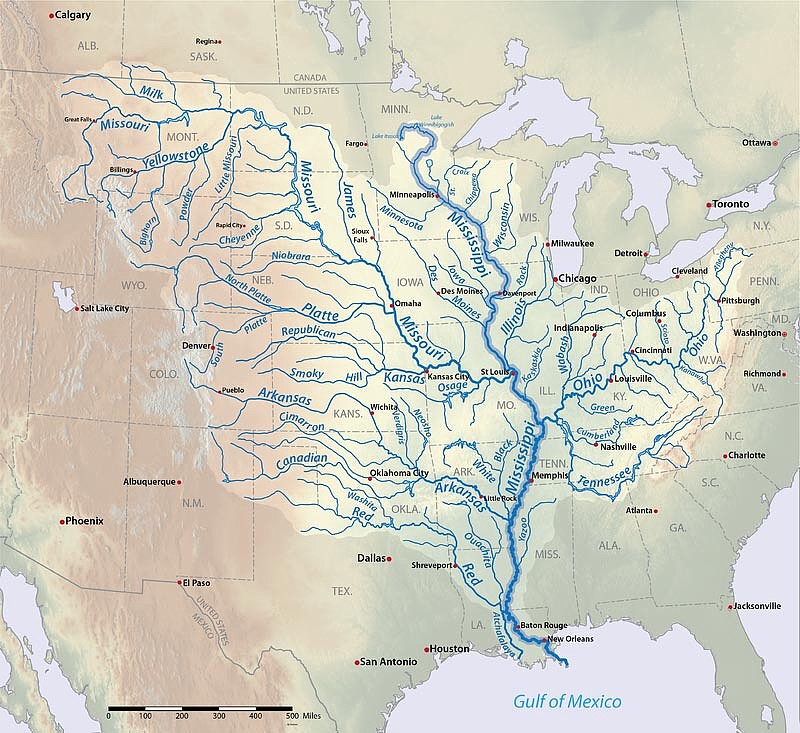I have never seen this map before:

I sharpened it a bit, so that I could read, with my Getting Old eyesight, the smaller river names with a bit less difficulty.
It is map number 7 of these 45 maps. A Twitter posting last night, now way down in my feed, showed one of these maps.
My favourite piece of geography there is probably Chicago, where it seems that they have a river which flows into the Mississippi. Blog and learn.
Attached blurb:
You may have heard that the Mississippi River is mighty, but if you ever doubted it, just take a look at this map. You’ll see that an extraordinary number of the United States’ rivers and tributaries send water into the Mighty Miss.
Quite so.
I love the names. Milk. Yazoo. Republican. Canadian (nowhere near Canada). Powder. Smoky. In general, I love the names of American places and geographical features. They seem impossibly exotic compared to the names of places in England. (But I’m sure that, for quite a few Americans, it must work the other way around.)
England has no big rivers. The Thames would hardly merit a name on the above map. I recall that one of my better pieces for Samizdata was about how the application of steam power to river transport entirely passed us Brits by. We went straight from stationary steam engines in coal mines to steam engines on locomotives. Unlike America. Yes, here.

Brian, apologies if this was the point you’re making but that river is the very reason for Chicago’s existence. Chicago sits right on the continental divide between the Misissippi and St Lawrence drainage basins. However since the St Lawrence River is more northly than Chicago as the last ice age receded southern Lake Michigan melted first and the only way the water could escape was to carve a passage through to the Misissippi. Once the St Lawrence became ice free the more natural route predominated and a marshy area was left where Chicago is today connecting the two basins. This was drained and then a canal built making a navigable connection between the Charles River and the Misissippi basin. Goods could now travel down the St Lawrence, through the great lakes, along the canal and down the Misissippi through the American heartland to the Gulf Of Mexico. Voila Chicago!
I did probably know that, or did read about it, about the ice receding, but thanks for the reminder.
Chicago has always interested me, because it was where the skyscraper first evolved/was invented.
Half the story is railways. Freight trains to and from the whole (basically) of America, every day. (Plus the Silver Streak of course.)
But of course, as you explain, it’s not just trains to and from America. It’s also, and before that, ships to and from the whole world, including America.
All of which had to be kept track of by pre-computerised pen-pushers and then telephoners. Hence the skyscrapers.
Of course, the thing that made New York a key city isn’t dramatically different. It’s at the mouth of the Hudson River, and the Erie Canal connected the Hudson to the Great Lakes, which made it a very important hub for maritime trade that came from inland.